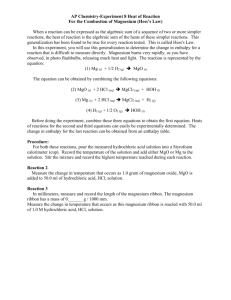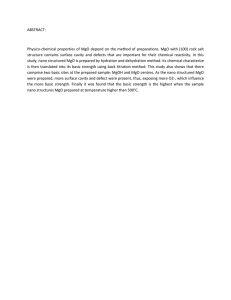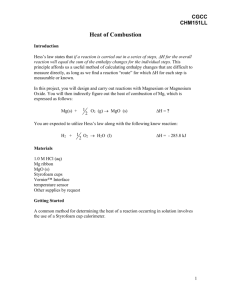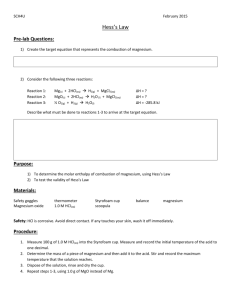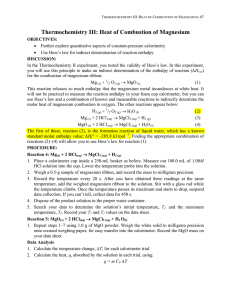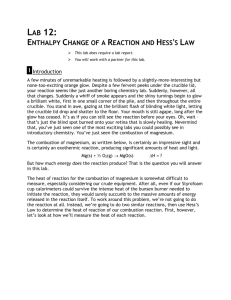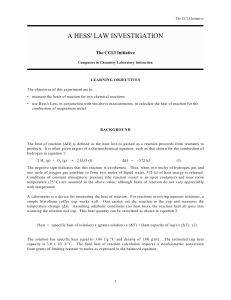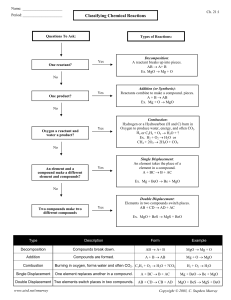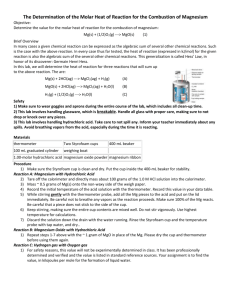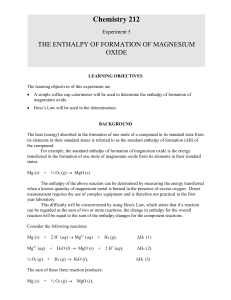Ideal Gas Experiments
advertisement
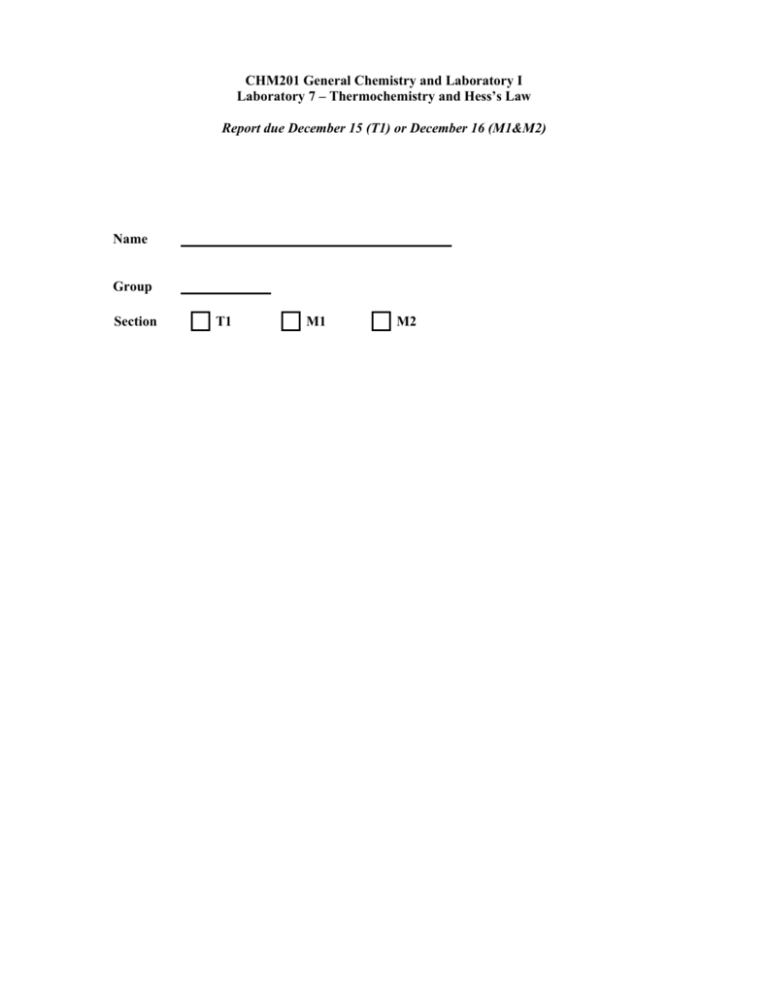
CHM201 General Chemistry and Laboratory I Laboratory 7 – Thermochemistry and Hess’s Law Report due December 15 (T1) or December 16 (M1&M2) Name Group Section T1 M1 M2 Results: (50 pts) Room Temperature Reactant Trial Number Mg Mg MgO MgO 1 2 3 4 Mass of reactant Moles of reactant Initial Temperature (T0) Linear Curve fit slope (m) Linear Curve fit intercept (b) Final Temperature (Tf) ∆T = Tf - To qwater qcalorimeter qrxn ∆Hrxn Use the following to determine the enthalpy of formation of magnesium oxide: Mg (s) + 2HCl (aq) → MgCl2 (aq)+ H2 (g) ΔH = (calculated in the experiment) MgO (s) + 2HCl (aq) → MgCl2 (aq)+ H2O (l) ΔH = (calculated in the experiment) H2 (g) + ½ O2 (g)→ H2O (l) ΔH = - 285.8 kJ/mol (from Appendix 3) Mg (s) + ½ O2 (g) ΔH = (determine using Hess’s Law) MgO (s) Calculations: (30 pts) 1. Using the enthalpies of reaction computed in the lab and the value given for the enthalpy of formation of liquid water, show the Hess’s Law determination of the enthalpy of formation of solid magnesium oxide. Show your work. 2. Compare the value you calculated with the actual value given in Appendix 3. Show your determination of percent error. Use the standard equation for this: %𝒆𝒓𝒓𝒐𝒓 = |𝒂𝒄𝒕𝒖𝒂𝒍 𝒗𝒂𝒍𝒖𝒆 − 𝒆𝒙𝒑𝒆𝒓𝒊𝒎𝒆𝒏𝒕𝒂𝒍 𝒗𝒂𝒍𝒖𝒆| × 𝟏𝟎𝟎% 𝒂𝒄𝒕𝒖𝒂𝒍 𝒗𝒂𝒍𝒖𝒆 Questions: (20 pts) 1. One of the assumptions is that the heat generated by the reaction is absorbed by pure water. Calculate the mass of HCl, the mass of Mg in your first trial and the mass of water (assume density = 1.0 g/mL for the HCl solution). Determine the percent of water by mass in the system. Does this support the assumption that the heat is absorbed by water? Explain you answer. 2. The calculations of the enthalpy of reaction assume that Mg and MgO are the limiting reagents. Prove that this is indeed the case for both the Mg and the MgO experiments. 3. Magnesium oxide reacts slowly with water to form magnesium hydroxide. What would be the effect on the observed value for ∆Hrxn for the reaction of MgO if 10% of the MgO had reacted with water to form Mg(OH)2? Would the value be higher or lower? (Hint: you need to determine the ∆H value for the reaction of Mg(OH)2with HCl from heat of formation data.) 4. Determine the ∆H of reaction for the following reactions (performed in Experiment 3) using enthalpy of formation data from the back of the text. (the ∆Hºf of Mg3N2 (s) is -461.2 kJ/mol) : a) Mg3N2 (s) + 6H2O (l) 3Mg(OH)2 (s) + 2NH3 (g) b) Mg(OH)2 (s) MgO (s) + H2O (l)
